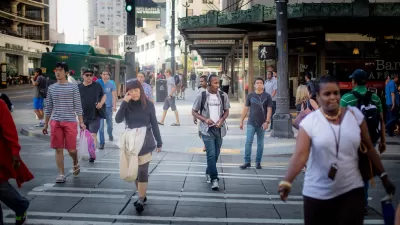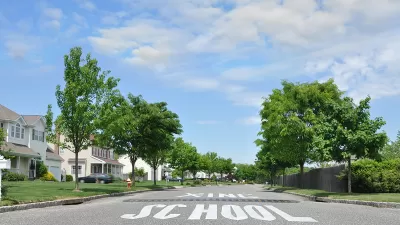A common narrative about Millennials: their preference for urban environments like San Francisco and New York City. To what degree is the stereotype real?

You've probably heard that educated Millennials moved into cities and ruined them for everyone else. Whether or not the last bit of that statement is true, educated Millennials do tend to live in large cities at a higher rate that the balance of the population.
"Nationwide, 25-to-34-year-old college graduates make up 6.4% of the population. In the 100 biggest cities, their (unweighted) average share is 9.3%," according to an article by Justin Fox that crunches data from the American Community Survey to reveal the real urban preferences of educated Millennials.
The article includes a list of the top cities and city-like entities for educated Millennials, calculated as college graduates ages 25-34 as a percentage of total population in 2017, and finds perhaps a few surprises. Leading the group is Arlington, Virginia, followed by Washington, D.C., and then San Francisco. Seattle and Boston round out the top five, though Fox notes that if Manhattan were on the list, it would have come in fifth on the list all by itself.
A list of the same population, on a rolling average between 2013 and 2017 produces even more surprises, listed in order: Hoboken, New Jersey; Somerville, Massachusetts; Cambridge, Massachusetts; Arlington, Virginia; and West Hollywood, California.
The article includes more ways to break down the data, and infographics to illustrate each of the lists.
FULL STORY: Where the Educated Millennials Congregate

Alabama: Trump Terminates Settlements for Black Communities Harmed By Raw Sewage
Trump deemed the landmark civil rights agreement “illegal DEI and environmental justice policy.”

Study: Maui’s Plan to Convert Vacation Rentals to Long-Term Housing Could Cause Nearly $1 Billion Economic Loss
The plan would reduce visitor accommodation by 25% resulting in 1,900 jobs lost.

Planetizen Federal Action Tracker
A weekly monitor of how Trump’s orders and actions are impacting planners and planning in America.

Wind Energy on the Rise Despite Federal Policy Reversal
The Trump administration is revoking federal support for renewable energy, but demand for new projects continues unabated.

Passengers Flock to Caltrain After Electrification
The new electric trains are running faster and more reliably, leading to strong ridership growth on the Bay Area rail system.

Texas Churches Rally Behind ‘Yes in God’s Back Yard’ Legislation
Religious leaders want the state to reduce zoning regulations to streamline leasing church-owned land to housing developers.
Urban Design for Planners 1: Software Tools
This six-course series explores essential urban design concepts using open source software and equips planners with the tools they need to participate fully in the urban design process.
Planning for Universal Design
Learn the tools for implementing Universal Design in planning regulations.
Caltrans
Smith Gee Studio
Institute for Housing and Urban Development Studies (IHS)
City of Grandview
Harvard GSD Executive Education
Toledo-Lucas County Plan Commissions
Salt Lake City
NYU Wagner Graduate School of Public Service





























